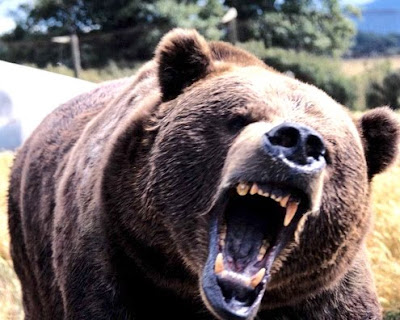When he was a kid in Detroit the night before Halloween was called Devil's Night, and it was a night for arson and vandalism. Teenagers would light fires across the city and burn down abandoned buildings, of which there were a lot at the time. In 1984, there were more than 800 fires in Detroit on October 30. Yikes! Happily things have gotten much better since then and in 2018 there were only four fires on Devil's Night.
His experience in Detroit was much different from mine growing up in the 1970s in Haverhill, Massachusetts. The night before Halloween didn't have a special name or any activities (criminal or otherwise) associated with it. Kids might pull some pranks on Halloween night itself (egging houses, throwing toilet paper in trees) but nothing as serious as arson. The main focus was on trick-or-treat (before it was banned because of a poison candy scare) and Halloween parties. And it was definitely only a one day celebration. There were no other days with special names.
 |
| Vintage photo from this site. |
"It all began on October 28, which was known as Cabbage Night. ... Many families raised cabbages in their gardens and young men went there to steal them. Afterwards, they raced through the streets throwing the plants at houses along the way. Ma warned me to stay away from the windows just in case..."
"The second night, Oct. 30, was called Beggars-Night. This was the night when children put on their costumes and went from door to door in search of treats. ..."
"On Oct. 31, Halloween came and most everybody stayed home. This was the night for mischief ... a return to those places that ignored a child's request for a treat. Most of the time it was cut clotheslines and soaped windows in our neighborhood. However, on the other side of Main Street, things could be worse. There were broken windows, messes on porches, and even an occasional tipped car."It turns out that special names for either Halloween or the days surrounding it were once common across the country. Most of them were coined after the pranks that kids pulled. Baltimore had Moving Night (because you moved things out of your neighbor's yard), Ohio had Doorbell Night (because of ring and run) and Vermont had Clothesline Night (because you'd throw toilet paper on clotheslines).
Are any of those special names for Halloween or the days surrounding it still in use today? Well, I think the citizens of Northfield, Vermont still observe Picket Night on October 30, when kids steal pickets from fences.
I know this because Northfield is supposedly home to one of New England's creepiest monsters: the Pigman! This porcine terror is associated with Picket Night and Halloween. According to one version of the legend, on October 30, 1951 a high school student named Sam Harris left his house for some Picket Night fun. He was planning to egg houses, throw toilet paper, and steal pickets with some friends. But he never showed up at the rendezvous point to meet his friends, and he never went back to his parents' house either. Sam Harris was never seen again. It was as if he vanished into thin air.
Did he vanish, or was he transformed? Later that fall someone (or something?) strange was seen in the woods outside town. It had the body of man but the head of a hideous pig. People in Northfield whispered that it was really Sam Harris and that he had sold his soul to the Devil. He had become a hideous pigman.
 |
| Image from American Horror Story. |
The town historian responded to these rumors with a column in the local paper. There were no such things as monsters, she wrote, and Sam Harris had been a good boy and a model citizen. But the day after the column was published the historian was found murdered in the Devil's Washbowl, a desolate area in the woods. The words "PICKET NIGHT" were carved into her flesh. The message was clear: the Pigman was real. Something monstrous and piglike is still said to be lurking in the woods outside Northfield to this day...
How's that for a story? There are several different legends associated with the Pigman but that one is particularly creepy and very appropriate for Halloween. It's nice to know that weird old folklore is still being celebrated in New England. Have a safe and happy holiday but whatever name you celebrate it!



